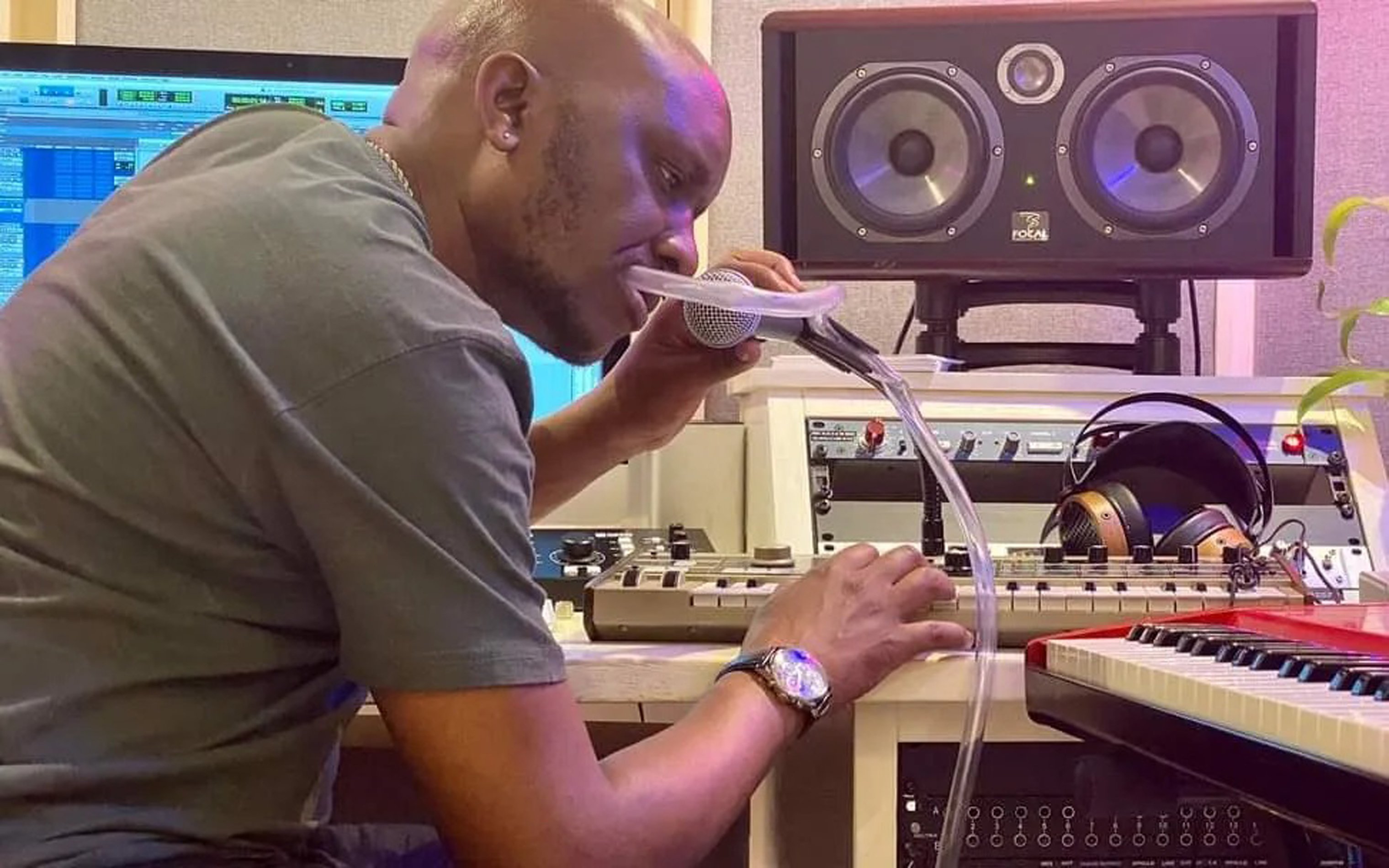
Faith Agumya and some of her art pieces. PHOTOs | PHILIP MATOGO
Art therapy is a mental health profession that changes lives by enriching mindsets through the creative process.
Its outcome is art uniting applied psychological theory and human experience within a psychotherapeutic relationship.
Faith Agumya is an author and team leader at Kwa Imani Community. While the organisation specialises in suicide prevention, Agumya does not see herself as an art therapist. Instead, she identifies as a mental health advocate with a deep passion for spreading healing and assisting those who are struggling to discover themselves and lead fulfilling lives.
As team leader of Kwa Imani Community and administrator of Kiggundu Art Studio, she has learnt a lot about the life of the mind and how it can be harnessed towards bringing art and psychotherapy into the realm of a better world.
Healing the world
“Art therapy is when people use art to feel better. They don’t have to be great artists. They can just draw, paint, write, sing or make things whichever way they like. It’s like talking without words. Sometimes, it’s hard to say how we feel. But with art, we can show it instead in a less strict and serious way,” she explains.
“When people do art therapy, they can relax and forget about their worries. It’s like taking a break from stress. Making art helps people understand themselves better. They can see what they’re feeling by looking at their art; it could be an art piece, sculpture, music, poem, story, etc. It’s like a mirror for their emotions,” she adds.
In a process akin to alchemy (turning base metal into gold), art therapy enriches lives by enabling better human connections as it helps people to simply reason with one another. Accordingly, minds meet through the medium of art and the conversation it sparks.
“Some people find it hard to say what’s on their mind. But with art, they can express themselves more easily. They might draw, perform or write something that’s bothering them, even if they can’t say it out loud,” she says.
Art therapy has indeed broken down many walls doing just that.
Other health professions
As the cliché goes, there are many ways to skin a cat. The field of mental health is teeming with ways and byways to give a cat a shear nightmare, pun intended, without it necessarily having to come under the knife, as it were.
“Using art therapy instead of other mental health professions has made a big difference in my life,” Agumya reveals.
She adds: “Art has a special way of helping people face their true selves. When we embrace our true selves through art, it makes the job of psychiatrists and psychologists much easier. They can better understand us and help us on our path to healing and growth.”
How she got started
Agumya says she never found art therapy, it found her. She was only in Primary Three when she was touched by its healing qualities as her parents, especially her late father, nurtured her artistic side. This lifelong journey culminated in what she does today.
“Now, as an art studio administrator at Kiggundu Art Studio, I have the opportunity to mentor artists. It’s amazing to watch them grow into the best versions of themselves while also making their mark on the world,” she says.
Agumya believes there is an unbreakable link between art and one’s mental wellbeing.
“Art often reflects emotions like happiness, sadness, fear, or anger. By looking at art, we can understand how someone might be feeling. Artists sometimes use their art to share their experiences, including struggles with mental health issues like depression or anxiety. This helps us see what they’ve been through,” she inflects.
She believes art encourages plurality as it makes the world safer for diversity.
“Art gives us different perspectives on life. It shows us how someone sees the world, including their thoughts and beliefs about mental health. Art shows how people cope with mental health challenges. They might write, sing, dance, paint or draw as a way to deal with stress or express themselves when words aren’t enough,” she says.
Artistic creations, she adds, also have the power to pave the way for the journey of healing and recovery from mental health issues. They might start with darker themes but evolve into brighter, more hopeful pieces of work.
Goals in art therapy
So what is she aiming for? First, she wants to deepen her understanding of art therapy through ongoing education and exploration.
Second, establish support groups under Kwa Imani in various countries worldwide, utilising art therapy to empower individuals to share their stories, showcase their talents through exhibitions, choreography, music, and collections, and spark conversations that promote positive change in a constantly changing and challenging world.
Third, she seeks to publish more books that delve into different aspects of her life, covering various sensitive topics.
Ultimately, she aspires to serve as a diplomatic advocate for the cause of mental health wellness, amplifying the transformative potential of art therapy on a global scale.
Origin or Art therapy
According to the Adelphi Psych Medicine Clinic, the formal practice of art therapy can be traced back to the mid-20th Century Europe, with the coining of the term being attributed to British artist Adrian Hill in 1942.
At a time where thousands suffered in sanatoriums from tuberculosis, it was observed that drawing and painting was a creative outlet for patients, which provided them the freedom their confines did not. Over the years, though, art therapy has grown leaps and bounds beyond the bounds of art-making.
“Art therapy isn’t just about making art. It’s also about thinking. When people make art, they have to use their imagination. They have to find new ways to solve problems. This helps them become better at thinking things through,” Faith Agumya is an author and team leader at Kwa Imani Community, says.
She adds: “Art therapy can help people stand up for themselves. When they make art about important things, like gender-based violence, health, sexual abuse, fairness or kindness, it shows what they care about. It’s like speaking up without saying a word. It gives them a voice.”




